The Latin America IP SME Helpdesk offers a wide range of jargon-free and business-oriented factsheets, introducing the reader to all aspects of intellectual property protection and management in Latin America.
There are three types of factsheets:
- Country factsheets, which present the IP landscape of a specific territory.
- Sectorial factsheets, presenting the key IP aspects of a specific industry.
- Factsheets focused on specific IP topics in Latin America

Intellectual Property (IP) conflicts among SMEs have a great impact on their finances, and their survival and success depend on how effectively they are solved. For example: in the event of patent infringement, the owner cannot enforce rights (i.e. prevent the patent’s use by the infringer) until...
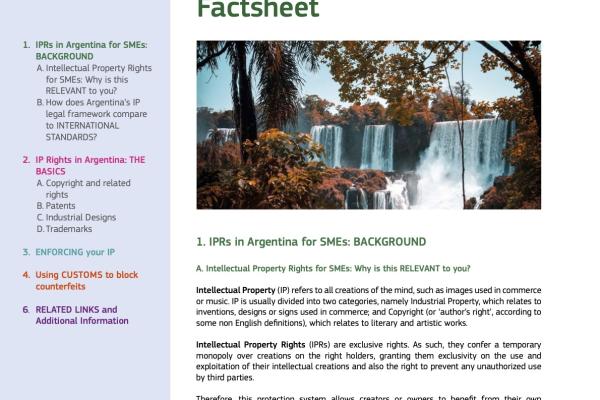
Intellectual Property (IP) refers to all creations of the mind, such as images used in commerce or music. IP is usually divided into two categories, namely Industrial Property, which relates to inventions, designs, or signs used in commerce; and Copyright (or ‘author’s right’, according to
some non...
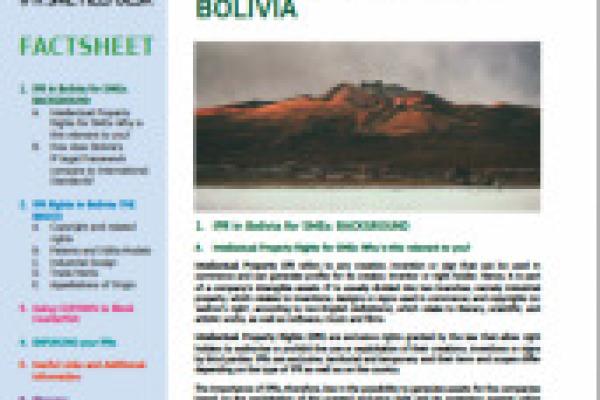
Although there is a certain degree of international harmonisation in the domain of intellectual property law, some relevant differences can still be found between Bolivia and Europe’s IP legal frameworks. This Factsheet aims to explain these differences concerning copyright, patents, industrial...
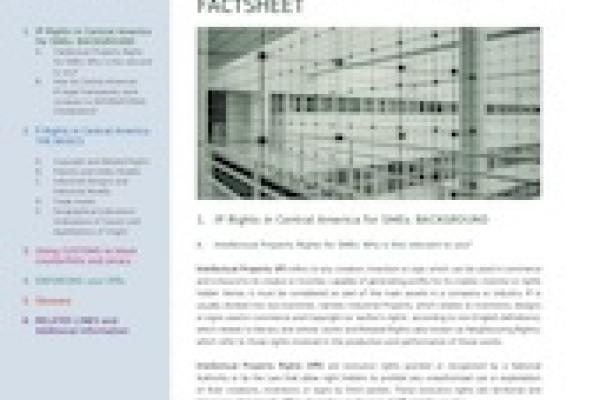
Although Intellectual Property legislation enjoys a certain degree of international harmonisation, Central America’s IP legislation differs somewhat from that of the EU. The purpose of this factsheet is to provide an overview of the IP system in El Salvador, Guatemala, Honduras, Nicaragua and Panama...

Copyright in Latin America in a nutshell
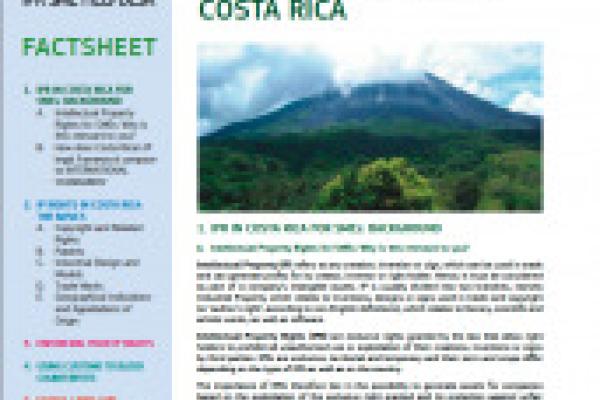
Although a certain degree of international harmonisation exists in the domain of intellectual property law, some relevant differences can still be found between Costa Rica and Europe’s IP legal frameworks. This Factsheet aims to explain the differences concerning copyright, patents, industrial...

Although Intellectual Property legislation enjoys a certain degree of international harmonization, the legislation of the Dominican Republic differs somewhat from that of the EU. The purpose of this Factsheet is to explain the differences concerning copyright, patents, industrial designs, trade...

Although there is a certain degree of international harmonisation in the domain of intellectual property law, some relevant differences can still be found between Ecuador and Europe’s IP legal frameworks. This Factsheet aims to explain these differences concerning copyright, patents, industrial...

A trade mark is a distinctive sign which is used to distinguish the products or services of a company from those of another company. According to WIPO’s 2017 statistics, Argentina is ranked among the twenty countries in the world with the highest number of trade mark registrations. This is a...

Patents are exclusive rights granted for inventions, i.e. technical solutions to problems, which could consist of a product, process or use, as far as they are considered: New, and thus not included in the state of the art. The state of the art comprises everything that has been made available to...

Industrial designs in Latin America in a nutshell: an administrative shortlist per country
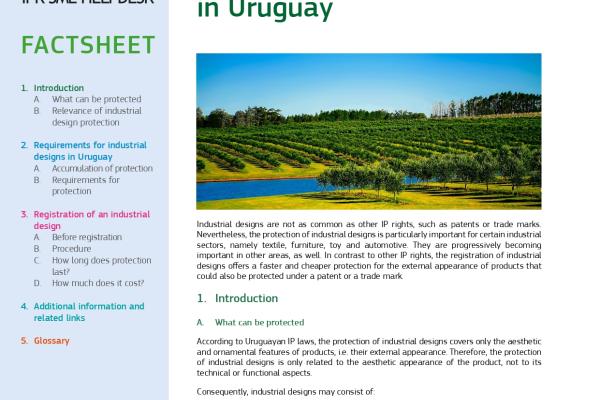
Industrial designs are not as common as other IP rights, such as patents or trade marks. Nevertheless, the protection of industrial designs is particularly important for certain industrial sectors, namely textile, furniture, toy, and automotive.
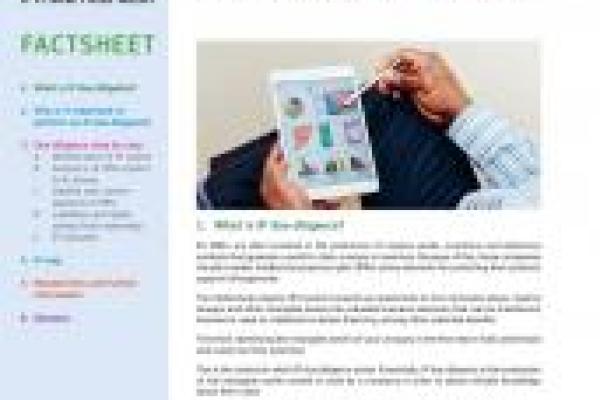
EU SMEs are often involved in the production of creative works, inventions and distinctive symbols that generate a profit to their creators or inventors. Because of this, these companies should consider intellectual property rights (IPRs) as key elements for protecting their products against...

An intellectual property right (‘IPR’) gives its holder a wide range of rights to prevent third parties from taking advantage of the use or commercialisation of the underlying intellectual asset (brand, invention, etc.). Even though the Agreement on Trade-Related Aspects of Intellectual Property...

According to WIPO’s Global Innovation Index 2017, which focused on intellectual property in the Agricultural sector worldwide, the highest shares of intellectual property instruments in Argentina, Brazil, Chile and Mexico are held by non-residents. The same report concludes that the Latin American...

Automotive manufacturing is one of Europe’s most relevant industrial activities and involves collateral sectors accounting for millions of jobs, large sums of investments and a significant part of the region exports.
According to the study “Latin America Passenger Vehicle Market outlook, 2019”, the...
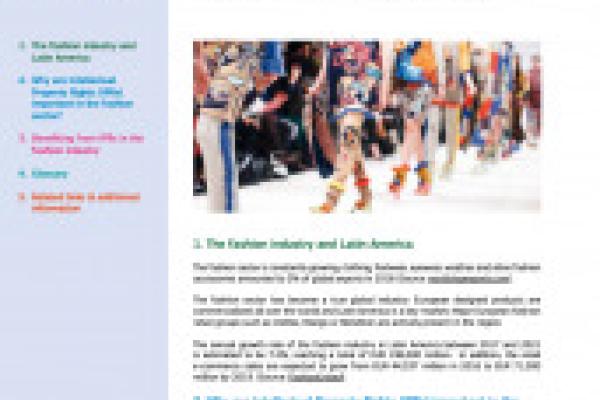
The fashion sector is a highly competitive environment where differentiating your products from your competitors’ ones may make the difference between success and failure. In addition, e-commerce allows your products to enter the Latin American markets even before you have decided to start...
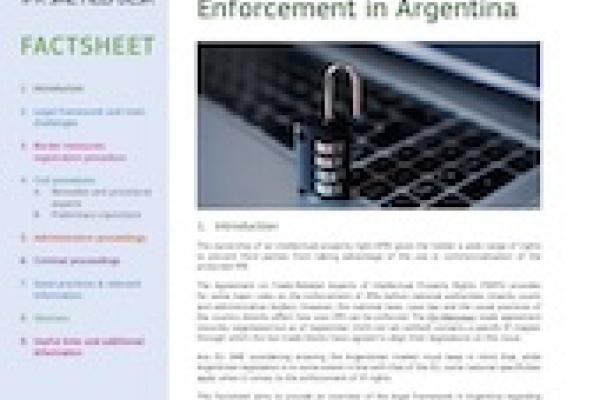
The ownership of an intellectual property right (IPR) gives the holder a wide range of rights to prevent third parties from taking advantage of the use or commercialisation of the protected IPR. The Agreement on Trade-Related Aspects of Intellectual Property Rights (TRIPS) provides for some basic...
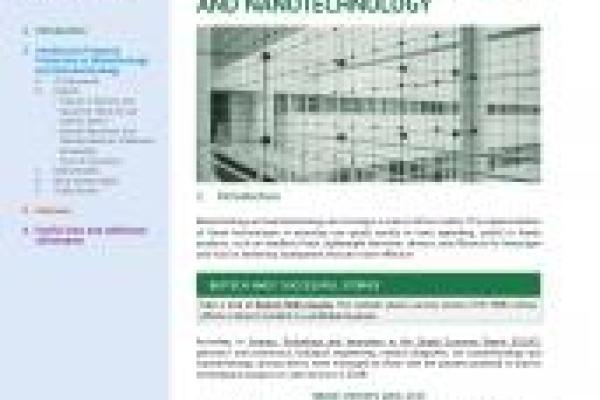
Biotechnology and nanotechnology are no longer a science-fiction matter. The implementation of these technologies in everyday use goods results in more appealing, useful or handy products, such as seedless fruits, lightweight electronic devices, new flavours for beverages and food or whitening...

According to certain European Commission’s numbers, the EU is Argentina’s third larger trade partner and import supplier. It comprised 17.2% of Argentina’s total trade in 2018. As a founding member of MERCOSUR, Argentina is a key market for European companies in the South American region...
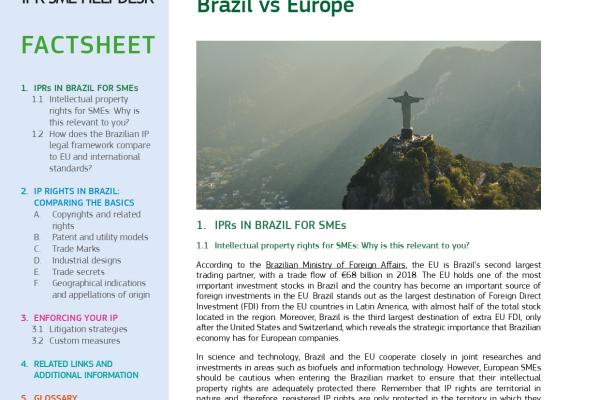
According to the Brazilian Ministry of Foreign Affairs, the EU is Brazil’s second largest trading partner, with a trade flow of €68 billion in 2018. The EU holds one of the most important investment stocks in Brazil and the country has become an important source of foreign investments in the EU...
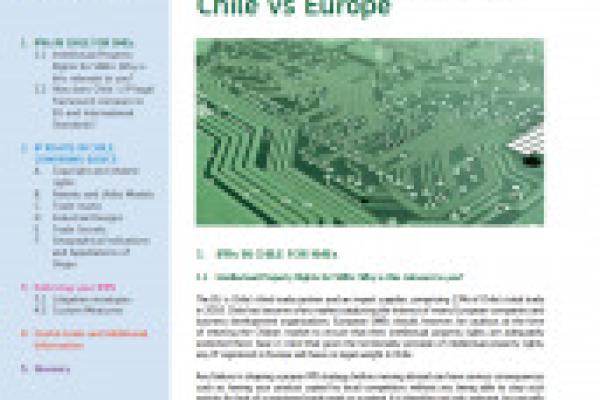
The EU is Chile’s third trade partner and an import supplier, comprising 13% of Chile’s total trade in 2018. Chile has become a key market catalysing the interest of many European companies and business development organizations. European SMEs should, however, be cautious at the time of entering the...

EU SMEs should be cautious when entering the Colombian market to ensure that their intellectual property rights are adequately protected in the territory. Bear in mind that given the territorial nature of intellectual property rights, the registration of an IP right in Europe has no legal validity...

Recent innovations in the fields of Information and Communication Technologies (ICT), mechanical and electrical engineering or biochemistry have led to the development of brand-new types of tools with broad potential application in the medical field. These technologies are fundamentally changing the...

Borders and customs are the major point of entrance of counterfeit and pirated products into Mexico. Every month the Mexican Institute of Industrial Property (IMPI), together with the custom authorities, seize hundreds of thousands of pirated and copycat products (collectively named as “pirated...
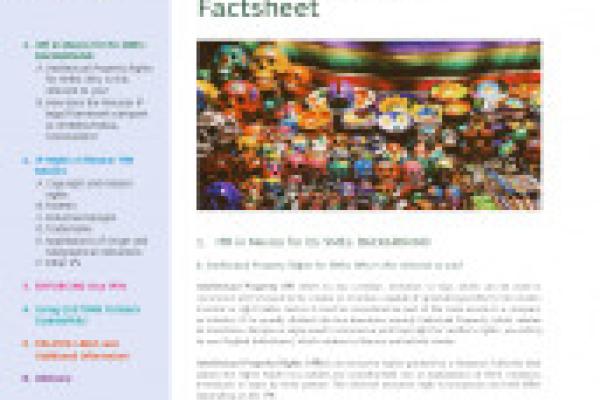
Although a certain degree of international harmonization exists in the domain of intellectual property law, some relevant differences can still be found between Mexico and European IP legal frameworks.
This Factsheet is aimed at explaining such differences concerning Copyright, Patents, Industrial...
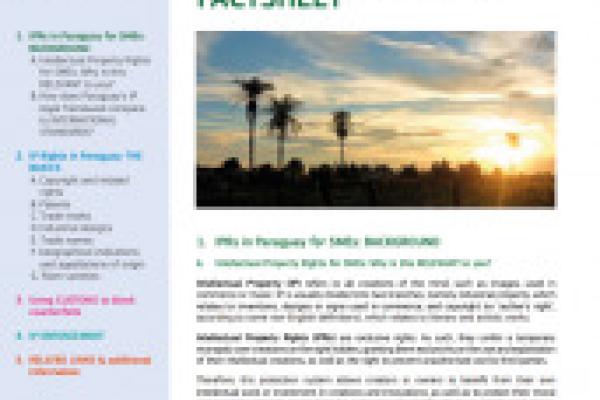
Paraguayan legislation provides for reasonable standards as regards IP protection. The country is a member of the World Trade Organisation (WTO) and has ratified the Agreement on TradeRelated Aspects of Intellectual Property Rights (TRIPS).
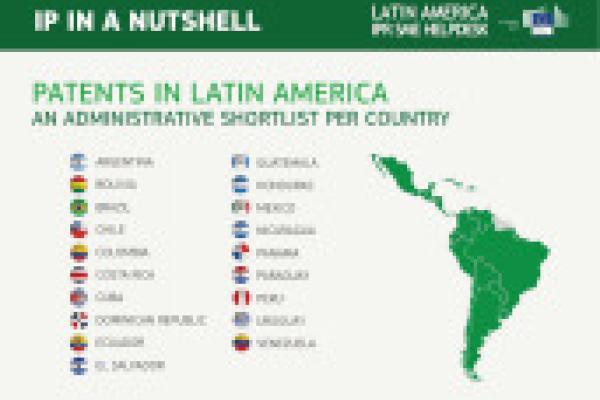
Patents in Latin America in a nutshell: an administrative shortlist per country

The Plant Breeder’s Right is established by the Argentine law on Seeds and Plant Breeding (Law No. 20.247). This law protects the rights of plant breeders (i.e., farmers and growers) over new types and qualities of seeds and grants them the ownership and exclusive rights to exploit new plant...

This factsheet will not only provide you with basic information and good practices to protect your works in the Andean Community countries, but also provide you with some recommendations and tips on how to prevent Copyright infringement, as well as different options to deal with it.
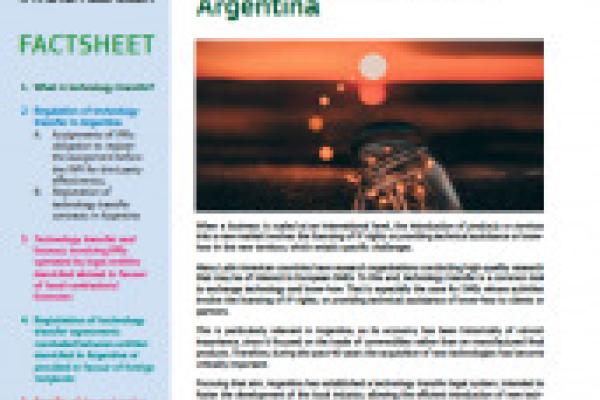
When a business is scaled at an international level, the introduction of products or services into a new market involves the licensing of IP rights or providing technical assistance or knowhow in the new territory, which entails specific challenges. Many Latin American countries have research...

The definition of technology transfer varies depending on the context and on the approach. Taking a more entrepreneurial approach, technology transfer refers to the ways and means through which companies, individuals and organizations acquire technology or know-how from third parties, whether such...
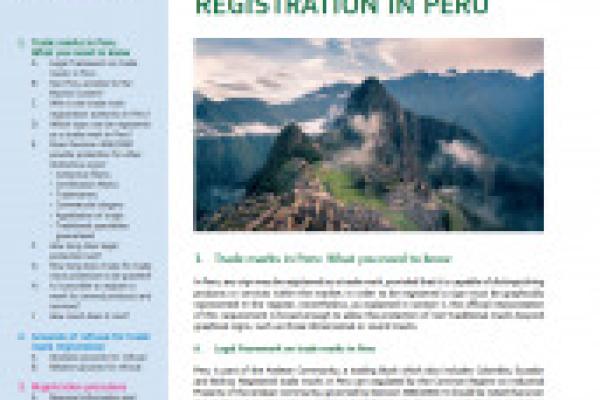
In Peru, any sign may be registered as a trade mark, provided that it is capable of distinguishing products or services within the market. In order to be registered a sign must be graphically represented in the register, nevertheless, as explained in section C, the official interpretation of this...
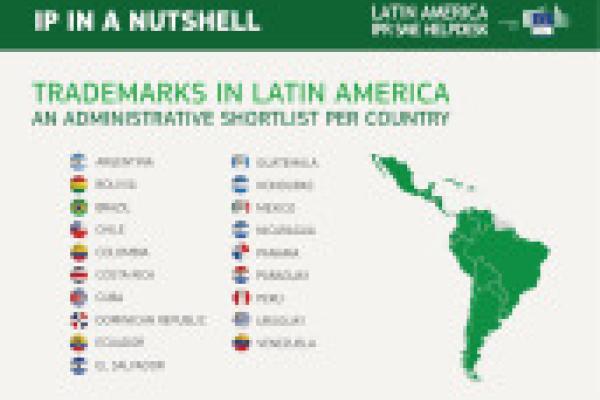
Trademarks in Latin America in a nutshell: an administrative shortlist per country
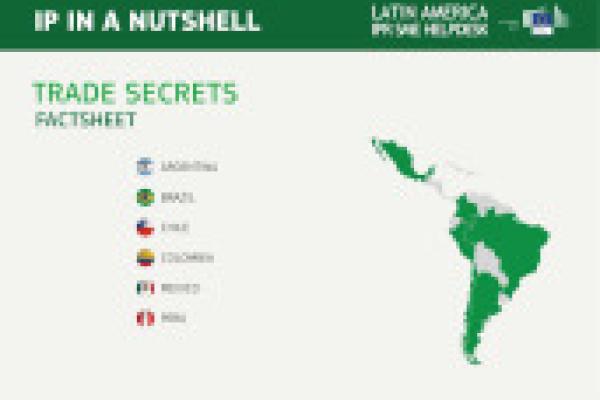
Trade secrets in Latin America in a Nutshell – an administrative shortlist per country
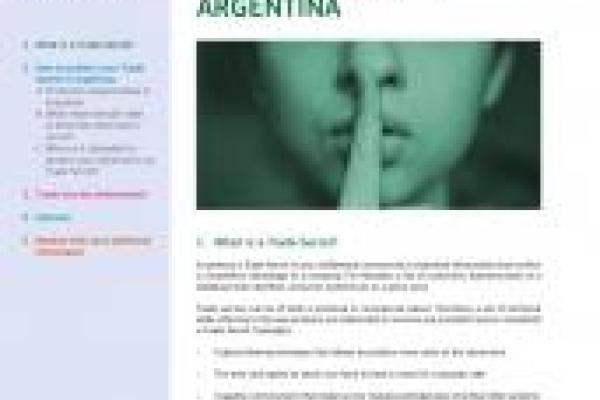
In general, a Trade Secret is any confidential commercial or industrial information that confers a competitive advantage to a company. For example, a list of customers, business plans or a database that identifies consumer preferences in a given area.
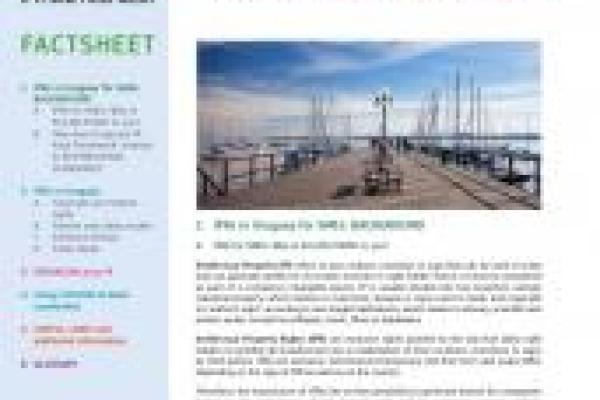
Although there is a certain degree of international harmonisation in the field of intellectual property law, Uruguayan legislation differs somewhat from that of the EU. The purpose of this Factsheet is to highlight the characteristics of the Uruguayan IP legal framework that EU SMEs must bear in...
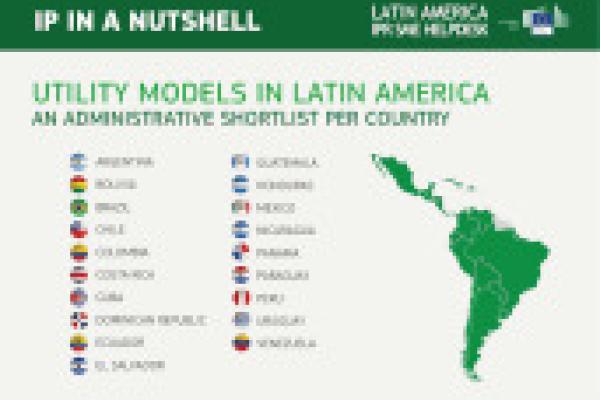
Utility models in Latin America in a nutshell: an administrative shortlist per country
